Abstract
A correlation of myelotoxic effect with concentration or a foreign compound of its metabolite at the site of action may provide useful insights into the mechanism of toxic action and/or its amelioration. This correlation requires sensitive and specific assay methods. This communication describes useful methods for the study of benzene disposition in rodents. The assays are sensitive, specific, and rapid. They rely on gas chromatography-mass spectrometry and on high performance liquid chromatography. These methods have allowed measurement of catechol, phenol, and hydroquinone in samples of rodent bone marrow following inhalation exposure to benzene. Their application to the study of benzene metabolism in rat bone marrow in situ is also described.
Full text
PDF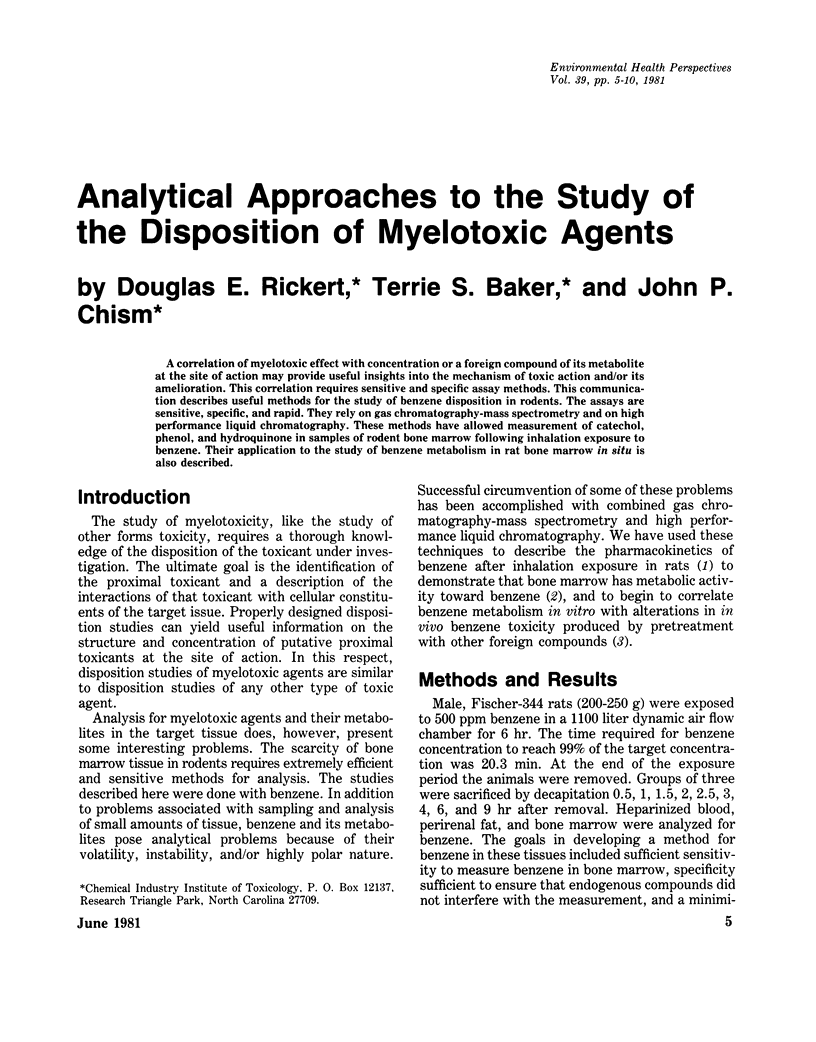
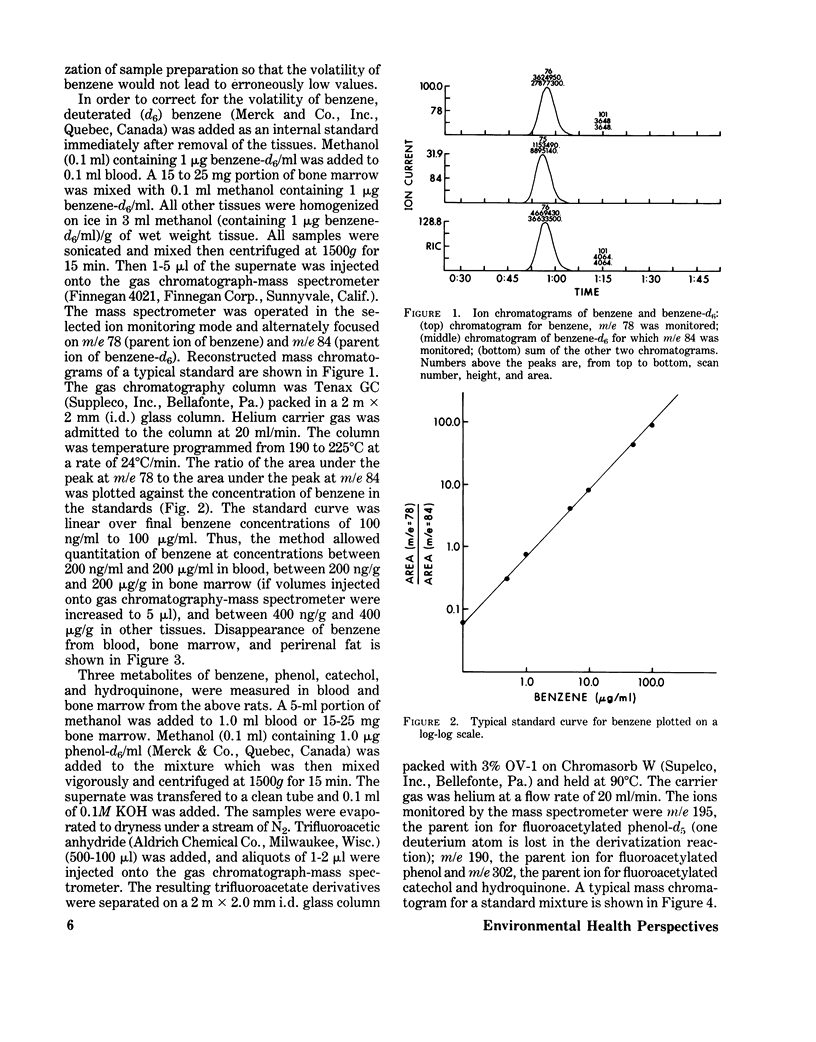
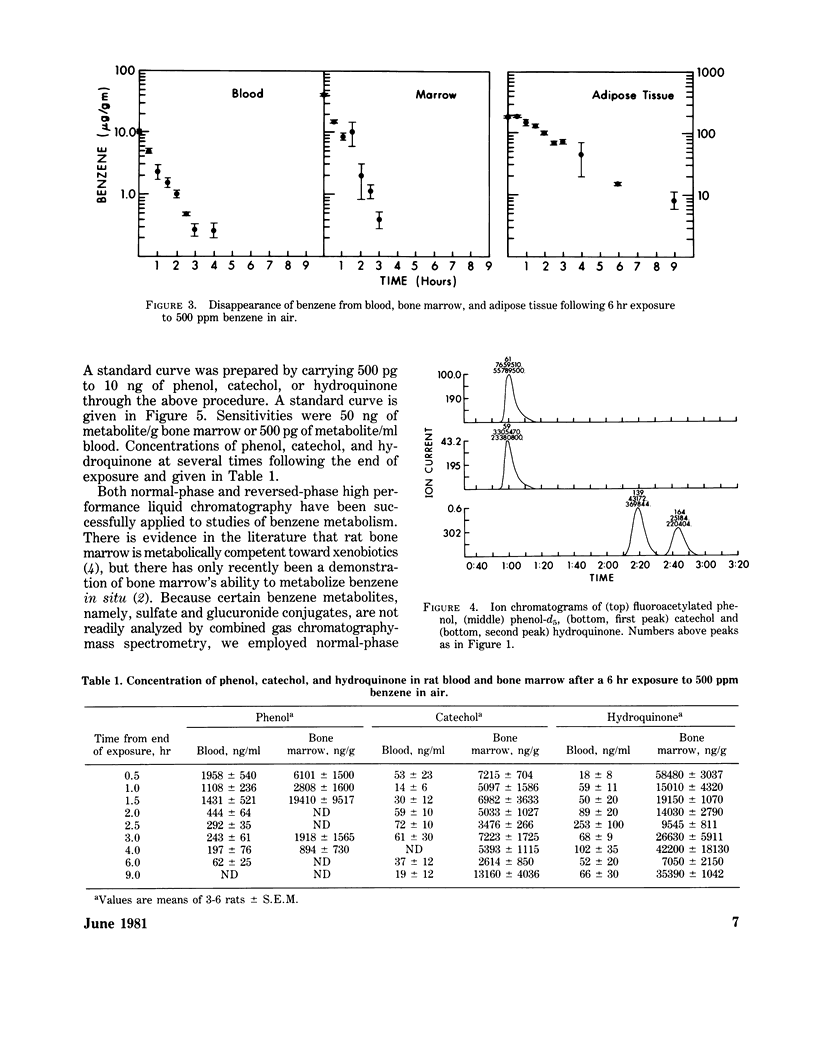
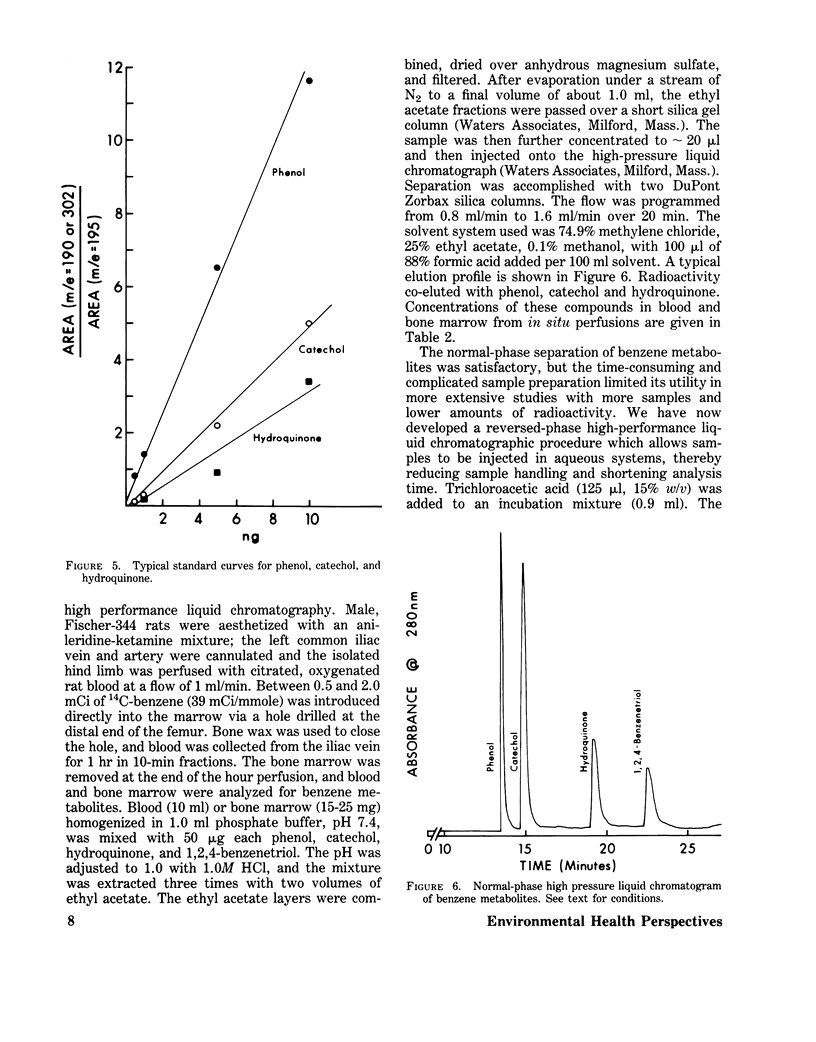
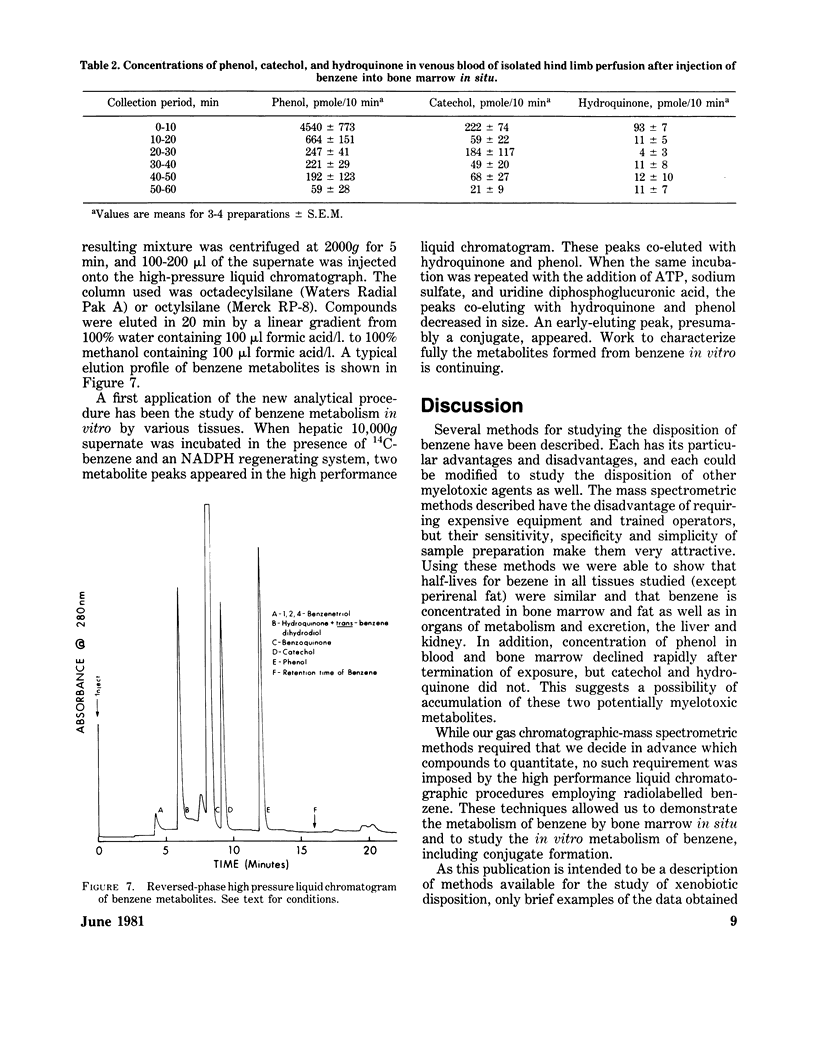
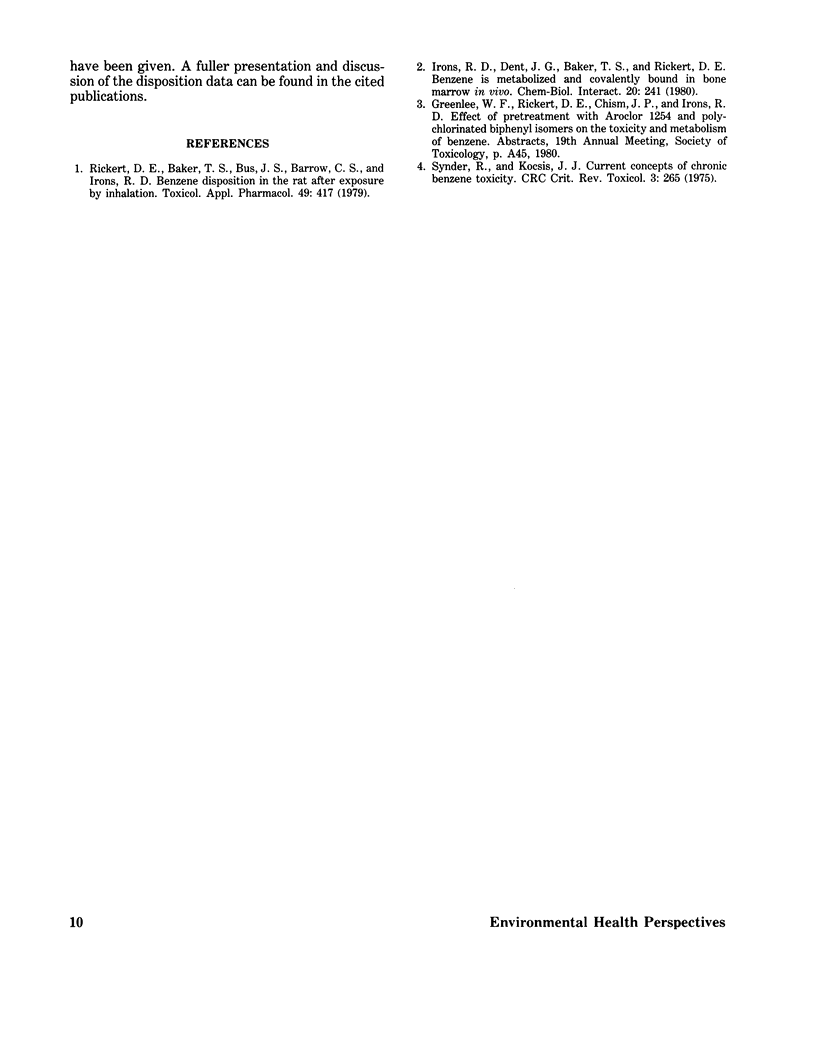
Selected References
These references are in PubMed. This may not be the complete list of references from this article.
- Irons R. D., Dent J. G., Baker T. S., Rickert D. E. Benzene is metabolized and covalently bound in bone marrow in situ. Chem Biol Interact. 1980 May;30(2):241–245. doi: 10.1016/0009-2797(80)90130-1. [DOI] [PubMed] [Google Scholar]
- Rickert D. E., Baker T. S., Bus J. S., Barrow C. S., Irons R. D. Benzene disposition in the rat after exposure by inhalation. Toxicol Appl Pharmacol. 1979 Jul;49(3):417–423. doi: 10.1016/0041-008x(79)90441-1. [DOI] [PubMed] [Google Scholar]
- Snyder R., Kocsis J. J. Current concepts of chronic benzene toxicity. CRC Crit Rev Toxicol. 1975 Jun;3(3):265–288. doi: 10.3109/10408447509079860. [DOI] [PubMed] [Google Scholar]


